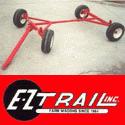 |
 |

|
|
|
Minnesota Ag News Headlines |
 |
Is Your Home Leaking Energy - and Money?
Minnesota Ag Connection - 02/23/2017
Air that leaks through a home's windows, doors, ceilings, walls, the foundation and other areas is a major source of heating and cooling loss. Known as air infiltration, it can waste up to one-third of your home's energy budget.
The Minnesota Commerce Department recommends stopping air leaks as one of the best ways to conserve energy, save money and increase the comfort of your home.
Typically, air infiltration causes drafts and a chilly feeling near windows and doors and in basements. Adjusting your thermostat will not stop it, but sealing those hidden cracks and openings will. By stopping air leaks, you will stay warmer in the winter and cooler
in the summer, while also using less energy and reducing your utility bills.
Sealing air leaks is one of the easiest ways to reduce energy loss.
The first step to tightening your home is a detailed inspection of air leaks. With a professional home energy assessment, which you can arrange through your local utility, a home energy inspector can show you locations where air is leaking and needs to be sealed.
A good rule of thumb is to start by plugging holes and leaks in the attic; then move to the exterior walls and look for smaller leaks around doors, windows and electrical switches and outlets. Finally, check out your basement.
Much of the plugging can be achieved with some inexpensive weather-stripping, caulking and filler materials. Wires, pipes and ducts that enter the attic must have firestop caulking or foam sealant applied. Doors and windows need tight weather-stripping and
caulking. Wall penetrations byfaucets and wires need to be sealed, too.
Caulking is one of the most cost-effective, do-it-yourself air-sealing methods. Caulk can be used to seal air leaks in spots such as cracks and gaps between exterior windows and door frames and your home's siding. Generally speaking, you can seal openings up
to a quarter inch with caulk alone.
For more information on air sealing, including caulking and plugging larger gaps, see the Air-Sealing section (pages 6-13) of the Minnesota Commerce Department's Home Energy Guide. The U.S. Department of Energy also offers guidance on Air Sealing Your
Home as well as tips for caulking.
Other Minnesota Headlines
|
|
 |


|
 |
|
Copyright © 2024 - Farms.com. All Rights Reserved. |
 |
|